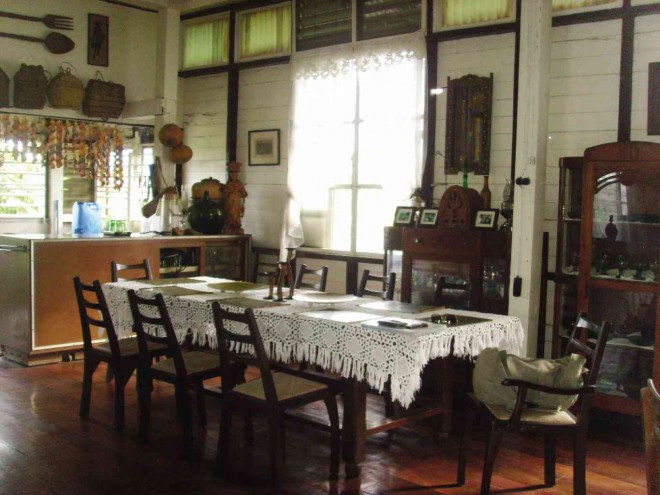
The irony of ironies. The ancestral house of heritage-conservation specialist and Unesco National Commission Philippines vice chair for culture Eric Zerrudo in Ajuy town, Iloilo, is under threat from the road-widening project of the Department of Public Works and Highways (DPWH).
Situated on the Iloilo-Capiz Road, La Florentina: Balay Bacabac-Babar was built in 1950 in the Art Deco style.
Zerrudo maintains the well-preserved house, the only important structure in the town founded by the Augustinians in 1590.
The only remaining relics are the 1895 bell on the belfry of its new church; and a big piece of a wooden post of the old church, now placed at the altar of a modern church under construction.
In front of the Bacabac-Babar house is the Alejo Posadas Elementary School building, which still has at least its Gabaldon-type façade. This, too, will be affected by the road project.
“What was not destroyed by Supertyphoon “Yolanda” (international name: Haiyan) last year is going to be destroyed by the DPWH,” Zerrudo said.
The proposed road improvement will encroach on 2 meters of the property and is projected to damage the façade of the house, which will affect its heritage value.
Significance
“For the whole [northern Iloilo] region, the significance of the house is the fact that it’s the only extant house which is very high in authenticity and integrity,” said Zerrudo.
He said the house, located in the hacienda region of Iloilo, was built after the war.
Being part of the hacienda area of the province, the house witnessed the developments of the sugar industry in Ajuy and its neighboring towns, said Zerrudo.
He said the house was also architecturally significant because it was built in the prewar and postwar Art Deco style.
“If you look at the house, the color, the proportion, the type of wood that was used is exactly the same color, proportion and type of wood used in the Camp John Hay [Baguio] cluster of houses,” said Zerrudo.
The Bacabac-Babar house also played a big role in the Aglipayan faith of the town as its owners were those who established the Iglesia Filipina Independiente church in Ajuy.
If there was shortage of classrooms in the opposite school in the 1960s, Zerrudo said, the house’s zaguan used to be converted into two classrooms, serving as an extension of the school.
Museum
The house is a repository of Iloilo artifacts.
It houses a collection of old prints of German and American newspapers featuring images of Iloilo and late 18th- to early 20th-century santos or religious antiques.
It also has a collection of old Iloilo maps and furniture, with a prayer room complete with framed 14 Stations of the Cross.
A dormitory-style bedroom is also one of the features of the house.
“So it has significance in terms of heritage, in terms of tourism. [It has value even] just for the education [not only of] the Ilonggos but even of the rest of the Filipinos,” said Zerrudo, adding the house was “really the museum of northern Iloilo.”
“That’s the only one left for Ajuy, and I think that’s the only one left for the whole of northern Iloilo,” said Zerrudo.
Ilonggo heritage advocate Eugene Jamerlan said the house should be spared from the road project
“We need more heritage destinations like that. These are few and far between nowadays. So dapat ma-preserve (So it should be preserved),” Jamerlan said.
Striking a balance
With a number of heritage issues hounding the country today, Zerrudo said the challenge was how to integrate development policies with heritage conservation.
“Policymakers should be the first ones really to have a clear understanding of how to meld the two [heritage and development] together,” he said.
“Consciousness for heritage and development should not only be impressed on policymakers but there should be a level of understanding even in the community for them (locals) to know why we need heritage,” Zerrudo explained.
Awareness
Zerrudo said there was now better public consciousness on the need for heritage conservation.
He cited how the locals reacted against the DPWH road project in Sariaya, Quezon; and the controversial National Museum project at Fort Pilar in Zamboanga, which gave sections of its walls a white palitada finish.
He said the local reaction would mean people would like to have a say on heritage conservation and development.
“[The people are saying] they should have a voice, they should have a say on what is valuable to them in terms of heritage and, at the same time, they [also value] development,” he said.